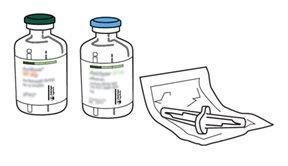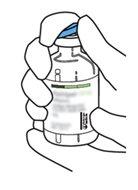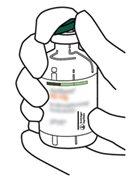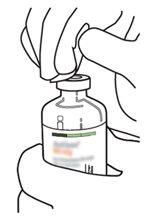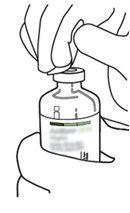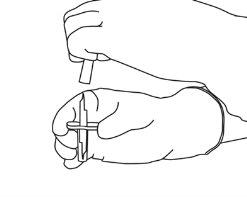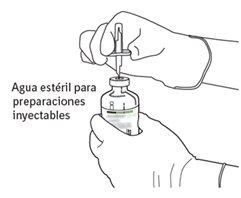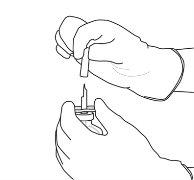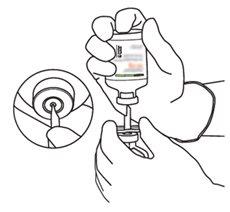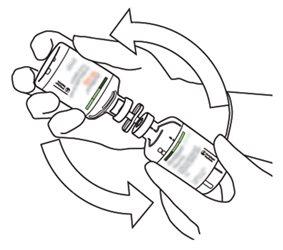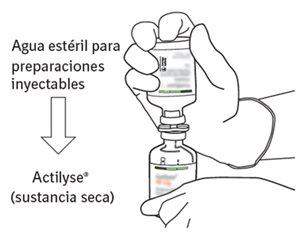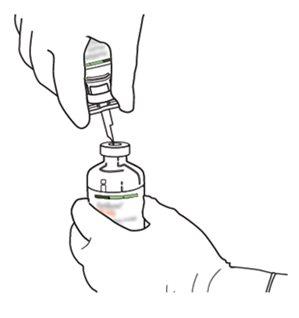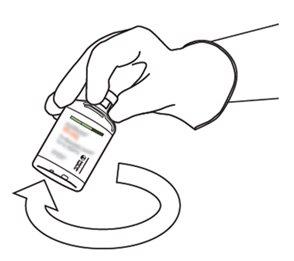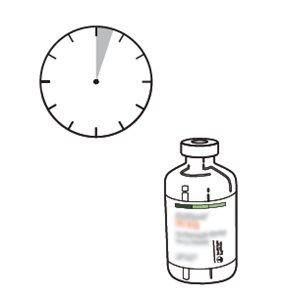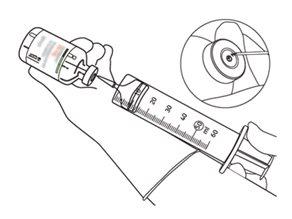
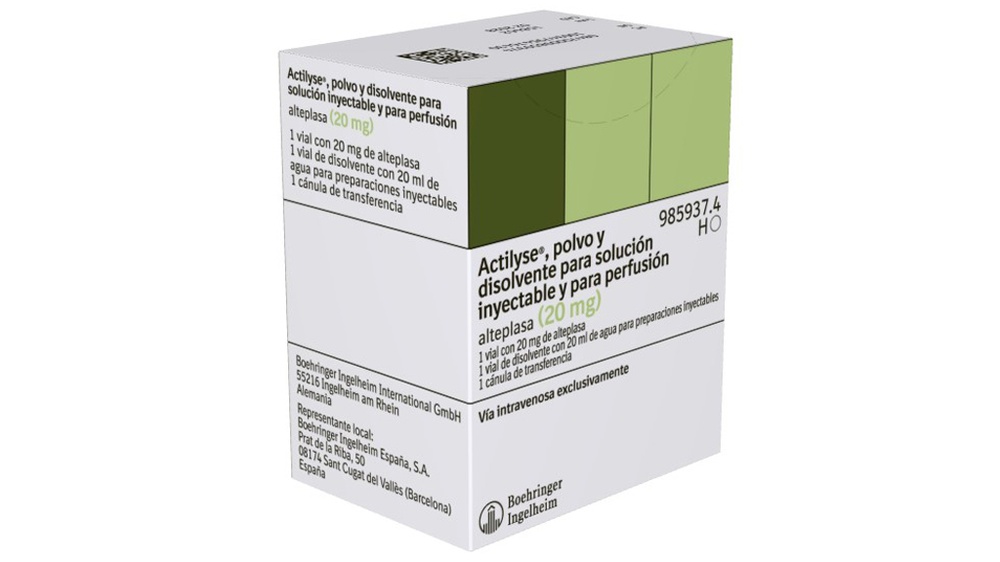
АКТИЛІЗЕ порошок та розчинник для приготування розчину для ін'єкцій та для інфузій

Запитайте лікаря про рецепт на АКТИЛІЗЕ порошок та розчинник для приготування розчину для ін'єкцій та для інфузій

Інструкція із застосування АКТИЛІЗЕ порошок та розчинник для приготування розчину для ін'єкцій та для інфузій
Введення
Опис: інформація для користувача
Актілізе, порошок і розчинник для ін'єкційного розчину та для перфузії
алтеплаза
Всімістно прочитайте цей опис перед тим, як почати використовувати цей лікарський засіб, оскільки він містить важливу інформацію для вас.
- Збережіть цей опис, оскільки вам може знадобитися знову його прочитати.
- Якщо у вас виникли питання, проконсультуйтеся з вашим лікарем або медсестрою.
- Якщо ви відчуваєте побічні ефекти, проконсультуйтеся з вашим лікарем або медсестрою, навіть якщо це побічні ефекти, які не вказані в цьому описі. Див. розділ 4.
Зміст опису:
- Що таке Актілізе і для чого він використовується
- Що вам потрібно знати перед тим, як отримати Актілізе
- Як вводиться Актілізе
- Можливі побічні ефекти
- Збереження Актілізе
- Зміст упаковки та додаткова інформація
1. Що таке Актілізе і для чого він використовується
Активний інгредієнт Актілізе - алтеплаза. Він належить до групи лікарських засобів, званих тромболітиками. Ці лікарські засоби діють шляхом розрідження кров'яних згустків, які утворилися в кровоносних судинах.
Актілізе 10 мг, 20 мг або 50 мг використовується для лікування захворювань, викликаних утворенням кров'яних згустків усередині кровоносних судин, включаючи:
- серцеві напади, викликані кров'яними згустками в артеріях серця (гострий інфаркт міокарда)
- кров'яні згустки в артеріях легень (гостра масивна легенева емболія)
- інсульт, викликаний кров'яним згустком в артерії мозку (гострий ішемічний інсульт)
2. Що вам потрібно знати перед тим, як отримати Актілізе
Вам не слід отримувати Актілізе:
- якщо ви алергічні (гіпersenситивні) до алтеплази або до будь-якого іншого компонента цього лікарського засобу (включаючи розділ 6)
- якщо у вас є або нещодавно була хвороба, яка збільшує ризик кровотечі, включаючи:
- геморагічний розлад або схильність до кровотечі
- важка або небезпечна кровотеча в будь-якій частині тіла
- кровотеча всередині мозку або черепа
- надто висока артеріальна гіпертонія, яка не контролюється
- бактеріальна інфекція або запалення серця (ендокардит), або запалення оболонок, які оточують серце (перикардит)
- запалення підшлункової залози (гостре панкреатит)
- виразка шлунка або виразки в кишечнику
- варикозне розширення вен в стравоході (варикоз стравоходу)
- анормальності кровоносних судин, наприклад, локальне розширення артерії (анеуризм)
- певні пухлини
- важка хвороба печінки
- якщо ви приймаєте лікарські засоби для "розрідження" крові (оральні антикоагулянти), якщо тільки відповідні тести не показують клінічно значимої активності цього лікарського засобу
- якщо ви раніше піддавалися операції на мозку або хребті
- якщо ви раніше піддавалися великої операції або важкій травмі протягом останніх 3 місяців
- якщо ви недавно отримали пункцію великої кровоносної судини
- якщо ви отримали масаж серця зовні протягом останніх 10 днів
- якщо ви мали дитину протягом останніх 10 днів
Ваш лікар також не введе вам Актілізе для лікування серцевих нападів або кров'яних згустків в артеріях легень
- якщо у вас є або раніше була інсульт, викликаний кровотечею в мозку (геморагічний інсульт)
- якщо у вас є або раніше був інсульт невідомої причини
- якщо у вас недавно (останні 6 місяців) був інсульт, викликаний кров'яним згустком в артерії мозку (гострий ішемічний інсульт), якщо тільки це не інсульт, за яким вам зараз буде введено лікування
Крім того, ваш лікар не введе вам Актілізе для лікування інсульту, викликаного кров'яним згустком в артерії мозку (гострий ішемічний інсульт)
- якщо симптоми інсульту розпочалися більше ніж 4,5 години тому, або якщо можливо, що симптоми розпочалися більше ніж 4,5 години тому, тому що ви не знаєте, коли вони розпочалися
- якщо ваш інсульт має лише дуже легкі симптоми
- якщо є ознаки кровотечі в мозку
- якщо у вас був інсульт протягом останніх трьох місяців
- якщо симптоми покращуються швидко до того, як вам буде введено лікування Актілізе
- якщо ваш інсульт дуже важкий
- якщо у вас були судоми (конвульсії) під час початку інсульту
- якщо у вас є аномальний час тромбопластину (тест для перевірки того, як згортається ваша кров). Цей тест може бути аномальним, якщо вам було введено гепарин (лікарський засіб, який використовується для "розрідження" крові) протягом останніх 48 годин
- якщо ви діабетик і мали інсульт раніше
- якщо кількість тромбоцитів (тромбокритів) у вашій крові дуже низька
- якщо ваша артеріальна гіпертонія дуже висока (вище 185/110) і може бути знижена лише за допомогою лікарських засобів
- якщо рівень цукру (глюкози) у вашій крові дуже низький (менше 50 мг/дл)
- якщо рівень цукру (глюкози) у вашій крові дуже високий (більше 400 мг/дл)
- якщо вам менше 16 років. (Для підлітків віком 16 років або старших див. розділ "Ваш лікар буде особливо обережно вводити Актілізе").
Ваш лікар буде особливо обережно вводити Актілізе
- якщо ви мали будь-яку іншу алергічну реакцію, крім алергічної реакції, яка може бути смертельною (важка гіпersenситивність) на алтеплазу або будь-який інший компонент цього лікарського засобу (включаючи розділ 6)
- якщо у вас є або нещодавно була будь-яка інша хвороба, яка збільшує ризик кровотечі, наприклад:
- легка травма
- біопсія (процедура, яка використовується для отримання зразків тканин)
- пункція великих кровоносних судин
- внутрішньом'язова ін'єкція
- масаж серця зовні
- якщо вам раніше було введено Актілізе
- якщо вам більше 65 років
- якщо вам більше 80 років, ви можете мати гірший результат незалежно від лікування Актілізе. Однак загалом ризик-користь від лікування Актілізе у пацієнтів віком понад 80 років є позитивним, і вік сам по собі не є бар'єром для лікування Актілізе
- якщо вам 16 років або старше, потрібно ретельно оцінити співвідношення ризик-користь для лікування ішемічного інсульту
Інші лікарські засоби та Актілізе
Повідомте вашому лікареві, якщо ви приймаєте або нещодавно приймали інші лікарські засоби, включаючи ті, які можна придбати без рецепта. Особливо важливо повідомити вашому лікареві, якщо ви приймаєте або нещодавно приймали:
- лікарські засоби, які використовуються для "розрідження" крові, включаючи:
- ацетилсаліцилову кислоту
- варфарин
- кумарин
- гепарин
- деякі лікарські засоби, які використовуються для лікування артеріальної гіпертонії (інгібітори ангіотензинперетворюючого ферменту, АПФ)
Вагітність, лактація та фертильність
Якщо ви вагітні або годуєте грудьми, вважаєте, що можете бути вагітною або плануєте вагітність, проконсультуйтеся з вашим лікарем. Ваш лікар введе вам Актілізе лише якщо очікувані користі переважують ризик для вашої дитини.
3. Як вводиться Актілізе
Актілізе буде приготовано і введено вашому лікареві або медичному працівнику. Він не призначений для самостійного введення.
Лікування Актілізе повинно бути розпочато якнайшвидше після появи симптомів.
Є три захворювання, для яких Актілізе призначений:
Серцевий напад (гострий інфаркт міокарда)
Доза, яку вам буде введено, залежить від вашої ваги. Максимальна доза Актілізе - 100 мг, але вона буде нижчою, якщо ваша вага менше 65 кг.
Він може бути введений двома різними способами:
- Режим дозування протягом 90 хвилин для пацієнтів, які лікувалися протягом 6 годин після появи симптомів. Він складається з:
- початкової ін'єкції частини дози Актілізе в вену
- перфузії залишку дози протягом наступних 90 хвилин.
- Режим дозування протягом 3 годин для пацієнтів, які лікувалися протягом 6-12 годин після появи симптомів. Він складається з:
- початкової ін'єкції частини дози Актілізе в вену
- перфузії залишку дози протягом наступних 3 годин.
Крім Актілізе, ваш лікар також введе вам інший лікарський засіб для запобігання утворенню кров'яних згустків. Цей лікарський засіб буде введено вам якнайшвидше після початку болю в грудях.
Кров'яні згустки в артеріях легень (гостра масивна легенева емболія)
Доза, яку вам буде введено, залежить від вашої ваги. Максимальна доза Актілізе - 100 мг, але вона буде нижчою, якщо ваша вага менше 65 кг.
Зазвичай лікарський засіб вводиться наступним чином:
- початкова ін'єкція частини дози в вену
- перфузія залишку дози протягом наступних 2 годин.
Після лікування Актілізе ваш лікар розпочне (або продовжить) лікування гепарином (лікарським засобом, який використовується для "розрідження" крові).
Інсульт, викликаний кров'яним згустком в артерії мозку (гострий ішемічний інсульт)
Актілізе повинен бути введений протягом 4,5 годин після появи перших симптомів. Чим раніше ви отримаєте Актілізе, тим більше ви можете виграти від лікування і тим менше ймовірність появи небезпечних побічних ефектів. Доза, яку вам буде введено, залежить від вашої ваги. Максимальна доза цього лікарського засобу - 90 мг, але вона буде нижчою, якщо ваша вага менше 100 кг. Актілізе вводиться наступним чином:
- початкова ін'єкція частини дози в вену
- перфузія залишку дози протягом наступних 60 хвилин.
Вам не слід приймати ацетилсаліцилову кислоту протягом перших 24 годин після лікування інсульту Актілізе. Ваш лікар може введити вам ін'єкцію гепарину, якщо це необхідно.
Якщо у вас є будь-які інші питання щодо використання цього продукту, проконсультуйтеся з вашим лікарем або медичним працівником.
4. Можливі побічні ефекти
Як і всі лікарські засоби, цей лікарський засіб може викликати побічні ефекти, хоча не всі люди їх відчувають.
Побічні ефекти, описані нижче, були спостережені у пацієнтів, яким було введено Актілізе:
Дуже часті (можуть впливати на більше ніж 1 з 10 пацієнтів)
- серцевна недостатність - може бути необхідне припинення лікування
- кровотеча в мозку (кровотеча в мозку) після лікування інсульту, викликаного кров'яним згустком в артерії мозку (гострий ішемічний інсульт) - може бути необхідне припинення лікування
- рідини в легенях (легенева едема)
- кровотеча в пошкодженій кровоносній судині (наприклад, гематома)
- низький артеріальний тиск (гіпотонія)
- біль в грудях (стенокардія)
Часті (можуть впливати на до 1 з 10 пацієнтів)
- додаткові серцеві напади
- кровотеча в мозку (кровотеча в мозку) після лікування серцевого нападу (гострий інфаркт міокарда) - може бути необхідне припинення лікування
- зупинка серцевих скорочень (серцевий арест) - може бути необхідне припинення лікування
- шок (дуже низький артеріальний тиск) через серцеву недостатність - може бути необхідне припинення лікування
- кровотеча в горлі
- кровотеча в шлунку або кишечнику, включаючи кров у блювотині (гематемезис) або кров у фекаліях (мелена або геморагічний пронос), кровотеча в яснах
- кровотеча в тканинах тіла, викликаючи синяки (гематома)
- кровотеча в сечовидільній системі або статевих органах, що може викликати появу крові в сечі (гематурія)
- кровотеча або утворення гематоми в місці ін'єкції
Рідкі (можуть впливати на до 1 з 100 пацієнтів)
- кровотеча, пов'язана з легенями, наприклад, мокротиння з кров'ю (гемоптиз) або кровотеча в дихальних шляхах - може бути необхідне припинення лікування
- кровотеча з носа (епістаксис)
- нерегулярні серцеві скорочення після відновлення кровотоку до серця
- пошкодження серцевих клапанів (мітральний регургіт) або пошкодження стінок, які розділяють серцеві камери (дефект міжшлуночкової перегородки) - може бути необхідне припинення лікування
- раптове блокування легеневої артерії (легенева емболія), мозкової артерії (мозкова емболія) та інших областей тіла (системна емболія)
- кровотеча з вуха
- зниження артеріального тиску
Дуже рідкі (можуть впливати на до 1 з 1000 пацієнтів)
- кровотеча в серцевій сумці (гемоперикард) - може бути необхідне припинення лікування
- внутрішня кровотеча в тазовій області (ретроперитонеальна геморагія) - може бути необхідне припинення лікування
- утворення кров'яних згустків в кровоносних судинах, які можуть потрапити в інші органи тіла (емболія). Симптоми залежатимуть від ураженого органу
- алергічні реакції, наприклад, висип (уртикарія) та висип, труднощі з диханням аж до астми (бронхоспазм), рідини під шкірою та слизових оболонках (ангіоедем), низький артеріальний тиск або шок - може бути необхідне припинення лікування
- кровотеча в оці (окулярна геморагія)
- розлад шлунка (нудота)
Дуже рідкі (можуть впливати на до 1 з 10 000 пацієнтів)
- важні алергічні реакції (наприклад, анафілаксія, яка становить загрозу для життя) - може бути необхідне припинення лікування
- події, які впливають на нервову систему, наприклад:
- спазми (конвульсії, напади)
- труднощі з мовленням
- замішання або делір (важке замішання)
- тривога, супроводжувана неспокійністю (агітація)
- депресія
- змінені думки (психоз)
Ці розлади часто трапляються разом з інсультом, викликаним кров'яним згустком або кровотечею в мозку.
Частота невідома (не може бути оцінена на основі доступних даних)
- кровотеча в внутрішніх органах, наприклад, кровотеча в печінці (геморагія печінки) - може бути необхідне припинення лікування
- утворення кристалів холестерину, які можуть потрапити в інші органи тіла (емболія кристалів холестерину). Симптоми залежатимуть від ураженого органу - може бути необхідне припинення лікування
- кровотеча, яка може потребувати переливання крові
- блювотиння
- підвищення температури тіла (лихоманка)
Пацієнти, які мали кровотечу в мозку або інші важкі кровотечі, можуть померти або мати постійну інвалідність.
Звіт про побічні ефекти
Якщо ви відчуваєте будь-які побічні ефекти, проконсультуйтеся з вашим лікарем або медсестрою, навіть якщо це побічні ефекти, які не вказані в цьому описі. Ви також можете повідомити про них безпосередньо через систему моніторингу лікарських засобів: www.notificaRAM.es. Надсилаючи звіти про побічні ефекти, ви можете допомогти надати більше інформації про безпеку цього лікарського засобу.
5. Збереження Актілізе
Зазвичай вам не потрібно зберігати Актілізе, оскільки він буде введений вашому лікареві.
Тримайте цей лікарський засіб поза досяжністю дітей.
Не зберігайте при температурі вище 25 °C. Зберігайте в оригінальній упаковці, щоб захистити від світла.
Не використовуйте Актілізе після закінчення терміну придатності, вказаного на етикетці флакона та упаковці. Термін придатності - останній день місяця, який вказано.
Розчин, відновлений
Розчин, відновлений, виявився стабільним протягом 24 годин при температурі 2-8 °C та протягом 8 годин при температурі 25 °C.
З мікробіологічної точки зору, продукт повинен бути використаний негайно після відновлення. Якщо він не використовується негайно, термін зберігання та умови використання до його використання будуть відповідальністю особи, яка його використовує, і не повинні перевищувати 24 години при температурі 2-8 °C.
6. Зміст упаковки та додаткова інформація
Склад Actilyse
- Активний інгредієнт - alteplasa. Кожна флакон містить 10 мг (що еквівалентно 5 800 000 ОД), 20 мг (що еквівалентно 11 600 000 ОД) або 50 мг (що еквівалентно 29 000 000 ОД) alteplasa.
Alteplasa виробляється за допомогою техніки рекомбінантної ДНК, використовуючи лінію овочних клітин китайського хом'яка. Інші компоненти - аргінін, фосфорна кислота (для регулювання pH) та полісорбат 80.
- Розчинник - вода для ін'єкційних препаратів.
Вигляд продукту та вміст упаковки
Actilyse - порошок і розчинник для ін'єкційної та перфузійної розв'язки. Кожна упаковка містить флакон з порошком та флакон з розчинником.
Actilyse доступний у наступних розмірах упаковок:
- флакон з порошком, що містить 10 мг alteplasa, та флакон з 10 мл розчинника.
- флакон з порошком, що містить 20 мг alteplasa, флакон з 20 мл розчинника та канюля для перекачування.
- флакон з порошком, що містить 50 мг alteplasa, флакон з 50 мл розчинника та канюля для перекачування.
Можливо, що тільки деякі розміри упаковок будуть продаватися.
Власник дозволу на маркетинг
Boehringer Ingelheim International GmbH
55216 Інгельгайм-ам-Рейн
Німеччина
Місцевий представник:
Boehringer Ingelheim Іспанія, С.А.
Прат-де-ла-Ріба, 50
08174 Сант-Кугат-дель-Вальєс (Барселона)
Іспанія
Виробник:
Boehringer Ingelheim Pharma GmbH & Co. KG
Біркендорфер Штрассе 65
88397 Біберах-ан-дер-Рісс
Німеччина
Boehringer Ingelheim Франція
100-104 авеню де Франс
75013 Париж
Франція
Дата останнього перегляду цього проспекту:09/2024
Детальна та актуальна інформація про цей лікарський засіб доступна на сайті Агенції з лікарських засобів та медичних продуктів Іспанії (AEMPS) http://www.aemps.gob.es/.
-------------------------------------------------------------------------------------------------------------------------------
Наступна інформація призначена лише для медичних працівників:
Відстежуваність
Для покращення відстежуваності біологічних лікарських засобів ім'я та номер партії лікарського засобу, який вводиться, повинні бути чітко зареєстровані.
Флакони з 2 мг alteplasa не призначені для використання при інфаркті міокарда, масивній пульмональній емболії чи гострому ішемічному інсульті (через ризик масивної недозування). Лише флакони з 10 мг, 20 мг та 50 мг призначені для використання при цих показаннях.
Реконструкція
Для отримання кінцевої концентрації 1 мг alteplasa на мл після реконструкції необхідно перелити весь об'єм розчинника, який постачається, до флакону, який містить порошок Actilyse. Для цього слід використовувати канюлю для перекачування, яка включена до розмірів упаковок 20 мг та 50 мг. Для презентації 10 мг слід використовувати шприц.
Для отримання кінцевої концентрації 2 мг alteplasa на мл після реконструкції слід використовувати лише половину розчинника, який постачається (за таблицею нижче). У цих випадках завжди слід використовувати шприц для перекачування необхідної кількості розчинника до флакону, який містить порошок Actilyse.
Вміст флакону з ін'єкцією Actilyse (10 мг, 20 мг або 50 мг) повинен розчинитися під асептичними умовами з водою для ін'єкційних препаратів, згідно з таблицею нижче, для отримання кінцевої концентрації alteplasa 1 мг/мл або 2 мг/мл:
Actilyse суха речовина | 10 мг | 20 мг | 50 мг |
(а) Об'єм стерильної води для ін'єкційних препаратів, який потрібно додати до сухої речовини | 10 мл | 20 мл | 50 мл |
Кінцева концентрація: | 1 мг alteplasa/мл | 1 мг alteplasa/мл | 1 мг alteplasa/мл |
(б) Об'єм стерильної води для ін'єкційних препаратів, який потрібно додати до сухої речовини | 5 мл | 10 мл | 25 мл |
Кінцева концентрація: | 2 мг alteplasa/мл | 2 мг alteplasa/мл | 2 мг alteplasa/мл |
Реконструйована розв'язка повинна вводитися наступним шляхом внутрішньовенно. Реконструйована розв'язка 1 мг/мл може додатково розбавлятися стерильним ін'єкційним розчином хлориду натрію 9 мг/мл (0,9%) до мінімальної концентрації 0,2 мг/мл, оскільки не можна виключити появу турбідності розв'язки. Не рекомендується додаткове розбавлення реконструйованої розв'язки 1 мг/мл стерильною водою для ін'єкційних препаратів або, загалом, використання розчинів вуглеводів для перфузії, наприклад, декстрози, через збільшення утворення турбідності в розв'язці. Actilyse не повинен змішуватися з іншими лікарськими засобами в одному флаконі для перфузії (навіть з гепарином).
Для умов зберігання див. розділ 5 проспекту.
Реконструйована розв'язка призначена для одноразового використання. Будь-яка невикористана частина розв'язки повинна бути викинута.
Інструкції з реконструкції Actilyse
1 | Реконструювати негайно перед введенням. |
|
2 | Видалити захисні кришки з двох флаконів, які містять стерильну воду та суху речовину Actilyse, відповідно, відтягуючи їх вгору пальцем. |
|
3 | Очистити гумову пробку кожного з флаконів ватним тампоном з алкоголем. |
|
4 | Видалити канюлю для перекачування* з упаковки. Не дезінфікувати та не стерилізувати канюлю для перекачування; вона стерильна. Видалити кришку. |
|
5 | Тримати флакон з стерильною водою вертикально на стабільній поверхні. Прямо згори, проколити гумову пробку вертикально в центрі пробки канюлею для перекачування, тиснучи з обережністю, але твердо, без обертання. |
|
6 | Тримати флакон з стерильною водою та канюлю для перекачування твердо однією рукою, використовуючи дві бічні засувки. Видалити залишкову кришку з верхньої частини канюлі для перекачування. |
|
7 | Тримати флакон з стерильною водою та канюлю для перекачування твердо однією рукою, використовуючи дві бічні засувки. Тримати флакон з сухою речовиною Actilyse вертикально над канюлею для перекачування та позиціонувати наконечник канюлі для перекачування точно в центрі пробки. Тиснути флакон з сухою речовиною вниз канюлею для перекачування прямо згори, проколюючи гумову пробку вертикально та з обережністю, але твердо, без обертання. |
|
8 | Перевернути обидва флакони та дозволити воді повністю стікти в суху речовину. |
|
9 | Видалити порожній флакон з водою разом з канюлею для перекачування. Їх можна викинути. |
|
10 | Взяти флакон з реконструйованою Actilyse та обережно повернути його, щоб розчинити будь-яку залишкову порошкову речовину, але не агітувати, оскільки це спричинить утворення піни. Якщо є бульбашки, тримати розв'язку нерухомо протягом декількох хвилин, щоб дозволити їм зникнути. |
|
11 | Реконструйована розв'язка містить 1 мг/мл alteplasa. Вона повинна бути прозорою та безколірною або світло-жовтою та не повинна містити жодних частинок. | |
12 | Видалити необхідну кількість лише за допомогою голки та шприца. Не використовувати зону проколу канюлі для перекачування, щоб уникнути втрат. |
|
13 | Використовувати негайно. Викинути невикористану розв'язку. |
(* Якщо канюля для перекачування включена до комплекту. Реконструкція також може бути здійснена за допомогою шприца та голки.)
Дозування та спосіб введення
Інфаркт міокарда
Дозування
- Режим дозування 90 хвилин (прискорений) для пацієнтів з інфарктом міокарда, у яких можна розпочати лікування протягом 6 годин після появи симптомів.
У пацієнтів з масою тіла ≥ 65 кг:
Об'єм для введення залежно від концентрації alteplasa | ||
1 мг/мл | 2 мг/мл | |
15 мг у вигляді болюсної внутрішньовенної ін'єкції, негайно за якою слідує | 15 мл | 7,5 мл |
50 мг у вигляді внутрішньовенної перфузії з постійною швидкістю протягом перших 30 хвилин, негайно за якою слідує | 50 мл | 25 мл |
35 мг у вигляді внутрішньовенної перфузії з постійною швидкістю протягом 60 хвилин, до максимальної загальної дози 100 мг | 35 мл | 17,5 мл |
У пацієнтів з масою тіла <65 кг загальна доза повинна бути调整 до маси тіла наступним чином:< p>
Об'єм для введення залежно від концентрації alteplasa | ||
1 мг/мл | 2 мг/мл | |
15 мг у вигляді болюсної внутрішньовенної ін'єкції, негайно за якою слідує | 15 мл | 7,5 мл |
0,75 мг/кг маси тіла у вигляді внутрішньовенної перфузії з постійною швидкістю протягом перших 30 хвилин, негайно за якою слідує | 0,75 мл/кг маси тіла | 0,375 мл/кг маси тіла |
0,5 мг/кг маси тіла у вигляді внутрішньовенної перфузії з постійною швидкістю протягом 60 хвилин | 0,5 мл/кг маси тіла | 0,25 мл/кг маси тіла |
- Режим дозування 3 години для пацієнтів з інфарктом міокарда, у яких можна розпочати лікування між 6 та 12 годинами після появи симптомів.
У пацієнтів з масою тіла ≥ 65 кг:
Об'єм для введення залежно від концентрації alteplasa | ||
1 мг/мл | 2 мг/мл | |
10 мг у вигляді болюсної внутрішньовенної ін'єкції, негайно за якою слідує | 10 мл | 5 мл |
50 мг у вигляді внутрішньовенної перфузії з постійною швидкістю протягом першої години, негайно за якою слідує | 50 мл | 25 мл |
40 мг у вигляді внутрішньовенної перфузії з постійною швидкістю протягом 2 годин, до максимальної загальної дози 100 мг | 40 мл | 20 мл |
У пацієнтів з масою тіла <65 кг:< p>
Об'єм для введення залежно від концентрації alteplasa | ||
1 мг/мл | 2 мг/мл | |
10 мг у вигляді болюсної внутрішньовенної ін'єкції, негайно за якою слідує | 10 мл | 5 мл |
внутрішньовенна перфузія з постійною швидкістю протягом 3 годин, до максимальної загальної дози 1,5 мг/кг маси тіла | 1,5 мл/кг маси тіла | 0,75 мл/кг маси тіла |
Коад'ювантне лікування: Рекомендується коад'ювантне антитромботичне лікування згідно з поточними міжнародними рекомендаціями для лікування пацієнтів з інфарктом міокарда з підвищенням сегмента ST.
Спосіб введення
Реконструйована розв'язка повинна вводитися внутрішньовенно та призначена для негайного використання.
Флакони з 2 мг alteplasa не призначені для використання при цій вказівці.
Масивна пульмональна емболія
Дозування
У пацієнтів з масою тіла ≥ 65 кг:
Повинна бути введена загальна доза 100 мг alteplasa протягом 2 годин. Наступний режим дозування є найбільш досвідченим:
Об'єм для введення залежно від концентрації alteplasa | ||
1 мг/мл | 2 мг/мл | |
10 мг у вигляді болюсної внутрішньовенної ін'єкції протягом 1-2 хвилин, негайно за якою слідує | 10 мл | 5 мл |
90 мг у вигляді внутрішньовенної перфузії з постійною швидкістю протягом 2 годин, до максимальної загальної дози 100 мг | 90 мл | 45 мл |
У пацієнтів з масою тіла <65 кг:< p>
Об'єм для введення залежно від концентрації alteplasa | ||
1 мг/мл | 2 мг/мл | |
10 мг у вигляді болюсної внутрішньовенної ін'єкції протягом 1-2 хвилин, негайно за якою слідує | 10 мл | 5 мл |
внутрішньовенна перфузія з постійною швидкістю протягом 2 годин, до максимальної загальної дози 1,5 мг/кг маси тіла | 1,5 мл/кг маси тіла | 0,75 мл/кг маси тіла |
Коад'ювантне лікування: Після лікування Actilyse повинно бути розпочато (або відновлено) лікування гепарином, якщо значення аПТТ нижче подвійного верхнього нормального значення. Перфузія повинна бути调整 так, щоб підтримувати значення аПТТ у діапазоні 50-70 секунд (1,5-2,5 рази від значення порівняння).
Спосіб введення
Реконструйована розв'язка повинна вводитися внутрішньовенно та призначена для негайного використання.
Флакони з 2 мг alteplasa не призначені для використання при цій вказівці.
Гострий ішемічний інсульт
Лікування повинно проводитися під відповідальністю та наглядом лікаря, який має досвід та підготовку з нейроваскулярної допомоги, див. Інструкція з медичним застосування, розділ 4.3 протипоказання та 4.4 особливі застереження.
Лікування Actilyse повинно бути розпочато якнайшвидше після появи симптомів інсульту (див. Інструкція з медичним застосування, розділ 4.4). Після 4,5 годин після появи симптомів інсульту існує негативне співвідношення між користю та ризиком лікування Actilyse, і його не слід вводити (див. Інструкція з медичним застосування, розділ 5.1).
Дозування
Рекомендована загальна доза - 0,9 мг alteplasa/кг маси тіла (до максимальної дози 90 мг), починаючи з 10% загальної дози у вигляді болюсної внутрішньовенної ін'єкції, негайно за якою слідує залишкова частина загальної дози у вигляді внутрішньовенної перфузії протягом 60 хвилин.
ТАБЛИЦЯ ДОЗУВАННЯ ДЛЯ ГОСТРОГО ІШЕМІЧНОГО ІНСУЛЬТУ | |||
При використанні стандартної концентрації 1 мг/мл об'єм (мл) для введення дорівнює推荐ованій дозі (мг) | |||
Вага (кг) | Загальна доза (мг) | Доза болюсної ін'єкції (мг) | Доза перфузії* (мг) |
40 | 36,0 | 3,6 | 32,4 |
42 | 37,8 | 3,8 | 34,0 |
44 | 39,6 | 4,0 | 35,6 |
46 | 41,4 | 4,1 | 37,3 |
48 | 43,2 | 4,3 | 38,9 |
50 | 45,0 | 4,5 | 40,5 |
52 | 46,8 | 4,7 | 42,1 |
54 | 48,6 | 4,9 | 43,7 |
56 | 50,4 | 5,0 | 45,4 |
58 | 52,2 | 5,2 | 47,0 |
60 | 54,0 | 5,4 | 48,6 |
62 | 55,8 | 5,6 | 50,2 |
64 | 57,6 | 5,8 | 51,8 |
66 | 59,4 | 5,9 | 53,5 |
68 | 61,2 | 6,1 | 55,1 |
70 | 63,0 | 6,3 | 56,7 |
72 | 64,8 | 6,5 | 58,3 |
74 | 66,6 | 6,7 | 59,9 |
76 | 68,4 | 6,8 | 61,6 |
78 | 70,2 | 7,0 | 63,2 |
80 | 72,0 | 7,2 | 64,8 |
82 | 73,8 | 7,4 | 66,4 |
84 | 75,6 | 7,6 | 68,0 |
75,6
7,6
68,0
86
77,4
7,7
69,7
88
79,2
7,9
71,3
90
81,0
8,1
72,9
92
82,8
8,3
74,5
94
84,6
8,5
76,1
96
86,4
8,6
77,8
98
88,2
8,8
79,4
100+
90,0
9,0
81,0
*введено у концентрації 1мг/мл протягом 60 хв за постійної швидкості перфузії.
Коад'ювантна терапія:безпека та ефективність цього режиму при одночасному введенні гепарину чи інгібіторів агрегації тромбоцитів, таких як ацетилсаліцилова кислота, протягом перших 24 годин після появи симптомів не були достатньо вивчені. Тому введення гепарину внутрішньовенно чи інгібіторів агрегації тромбоцитів, таких як ацетилсаліцилова кислота, слід уникати протягом перших 24 годин після лікування Актілайзом через підвищення ризику кровотечі. Якщо гепарин потрібен для інших показань (наприклад, профілактика глибокої венозної тромбози) доза не повинна перевищувати 10 000 ОД на добу, вводиться підшкірно.
Форма введення
Рідина після реконституції повинна вводитися внутрішньовенно та призначена для негайного використання.
Ампули з 2 мг алтеплази не призначені для використання в цій вказівці.
Педіатричне населення
Досвід використання Актілайзу в дітей та підлітків обмежений. Актілайз протипоказаний для лікування гострого ішемічного інсульту в дітей та підлітків молодших 16 років (див. Характеристику засобу, розділ 4.3). Доза для підлітків у віці від 16 до 17 років така ж, як і для дорослих (див. Характеристику засобу, розділ 4.4 для отримання рекомендацій щодо використання методів візуалізації перед початком лікування).
Підлітків у віці 16 років та старших слід лікувати згідно з інструкціями щодо використання препарату для дорослого населення після отримання зображень за допомогою відповідних методів для виключення псевдоінсульту та підтвердження артеріальної оклюзії, що відповідає неврологічному дефіцитові.
- Країна реєстрації
- Діючі речовини
- Потрібен рецептТак
- Виробник
- Інформація є довідковою і не є медичною порадою. Перед прийомом будь-яких препаратів обов'язково проконсультуйтеся з лікарем. Oladoctor не несе відповідальності за медичні рішення, прийняті на основі цього контенту.
- Альтернативи до АКТИЛІЗЕ порошок та розчинник для приготування розчину для ін'єкцій та для інфузійФорма випуску: РОЗЧИН ДЛЯ ІН'ЄКЦІЙ, 1500 МОДіючі речовини: apadamtase alfa and cinaxadamtase alfaВиробник: Takeda Manufacturing Austria AgПотрібен рецептФорма випуску: ІН'ЄКЦІЙНИЙ, 500 МОДіючі речовини: apadamtase alfa and cinaxadamtase alfaВиробник: Takeda Manufacturing Austria AgПотрібен рецептДіючі речовини: protein CВиробник: Takeda Manufacturing Austria AgПотрібен рецепт
Аналоги АКТИЛІЗЕ порошок та розчинник для приготування розчину для ін'єкцій та для інфузій в інших країнах
Найкращі аналоги з тією самою діючою речовиною та терапевтичним ефектом.
Аналог АКТИЛІЗЕ порошок та розчинник для приготування розчину для ін'єкцій та для інфузій у Polónia
Аналог АКТИЛІЗЕ порошок та розчинник для приготування розчину для ін'єкцій та для інфузій у Ukraine
Лікарі онлайн щодо АКТИЛІЗЕ порошок та розчинник для приготування розчину для ін'єкцій та для інфузій
Консультація щодо дозування, побічних ефектів, взаємодій, протипоказань та поновлення рецепта на АКТИЛІЗЕ порошок та розчинник для приготування розчину для ін'єкцій та для інфузій – за рішенням лікаря та згідно з місцевими правилами.




